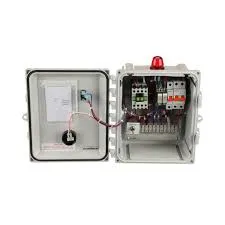Understanding Rubber Tape for Leak Repairs A Comprehensive Guide
In both industrial and household contexts, leaks can lead to significant damage and financial losses if not addressed timely. Whether it’s a dripping faucet, a leaky pipe, or a malfunctioning hose, the need for effective repair methods is undeniable. One of the most versatile and reliable solutions available on the market today is rubber tape. In this article, we will explore the advantages, applications, and proper usage of rubber tape for leak repairs.
What is Rubber Tape?
Rubber tape, often referred to as self-fusing or self-vulcanizing tape, is an elastic and waterproof tape made from a rubber compound. Unlike traditional adhesive tapes, rubber tape bonds to itself upon contact, creating a solid, cohesive barrier that effectively seals leaks and prevents moisture ingress. Available in various thicknesses and widths, rubber tape provides flexibility and adaptability for various repair scenarios.
Advantages of Rubber Tape
1. Waterproof and Weather Resistant Rubber tape is inherently waterproof, making it suitable for both indoor and outdoor applications. Its resistance to weather conditions ensures that it remains effective even when exposed to moisture, sunlight, and extreme temperatures.
2. Strong Adhesion The self-bonding properties of rubber tape allow it to create a strong, durable seal without the need for additional adhesives. Once applied, it cures to form a solid structure that can withstand pressure and vibrations.
3. Ease of Use One of the most appealing aspects of rubber tape is its straightforward application process. It can be cut to the desired length and wrapped around the damaged area with minimal tools or preparation. This ease of use makes it an ideal solution for emergencies.
4. Electrical Insulation Many types of rubber tape are also designed to provide electrical insulation, making them suitable for repairs on electrical wires and components. This feature is particularly beneficial for professionals and DIY enthusiasts alike.
5. Chemical Resistance Rubber tape is resistant to many chemicals, oils, and fuels, making it suitable for various industrial applications. This durability ensures that it will not degrade or lose its effectiveness when exposed to harsh substances.
Applications of Rubber Tape
Rubber tape is incredibly versatile and can be used in various scenarios, including
- Plumbing Repairs Homeowners and plumbers can use rubber tape to quickly seal leaking pipes, faucets, and hoses. It is particularly useful for temporary fixes while waiting for permanent repairs.
rubber tape for leaks

- Electrical Repairs When dealing with exposed wires, rubber tape can provide insulation and protection against moisture, preventing electrical shorts and enhancing safety.
- Automotive Use In the automotive sector, rubber tape can seal leaks in hoses and pipes, ensuring that systems remain operational and preventing damage from fluid loss
.- General Household Use From fixing garden hoses to sealing leaks in air mattresses or inflatable pools, rubber tape can be a go-to solution for various household repairs.
How to Use Rubber Tape Effectively
To ensure the best results with rubber tape, follow these simple steps
1. Clean the Surface Before applying rubber tape, clean the surface of the area you intend to fix. Remove any dirt, oil, or debris to promote better adhesion.
2. Align and Stretch Position the rubber tape over the leak and stretch it slightly as you wrap it around the damaged area. This tension will help create a tighter seal.
3. Overlap Layers For larger leaks or damage, overlap each layer of tape by about half its width. This ensures complete coverage and enhances the seal’s effectiveness.
4. Smooth Down After wrapping, smooth down the edges to ensure a secure seal. There’s no need for additional adhesive, but make sure the edges are snug against the surface.
5. Allow to Cure While rubber tape bonds quickly, it’s best to allow some time for the tape to properly cure and develop its full strength.
Conclusion
Rubber tape is an essential tool for anyone facing leaks, whether at home or in an industrial setting. Its ease of use, strong adhesive properties, and resistance to water and chemicals make it an ideal choice for a wide range of applications. By understanding how to effectively use rubber tape, you can resolve leaks quickly and efficiently, saving time and reducing potential damages. Whether you are a homeowner, a DIY enthusiast, or a professional tradesperson, rubber tape should be a staple in your repair toolkit.
-
XIANGFAN Rubber Tape-Ultimate Solutions for All Your Insulation NeedsNewsJun.24,2025
-
XIANGFAN Rubber Tape-Protection for Industrial and Residential ApplicationsNewsJun.24,2025
-
XIANGFAN Rubber Tape: Superior Safety and Sealing for Demanding EnvironmentsNewsJun.24,2025
-
XIANGFAN Rubber Tape: Reliable Solutions for Every Electrical ChallengeNewsJun.24,2025
-
XIANGFAN Electrical & Industrial Tape: Powering Reliability Across IndustriesNewsJun.24,2025
-
XIANGFAN Electrical & Industrial Tape: Excellence in Every ApplicationNewsJun.24,2025
